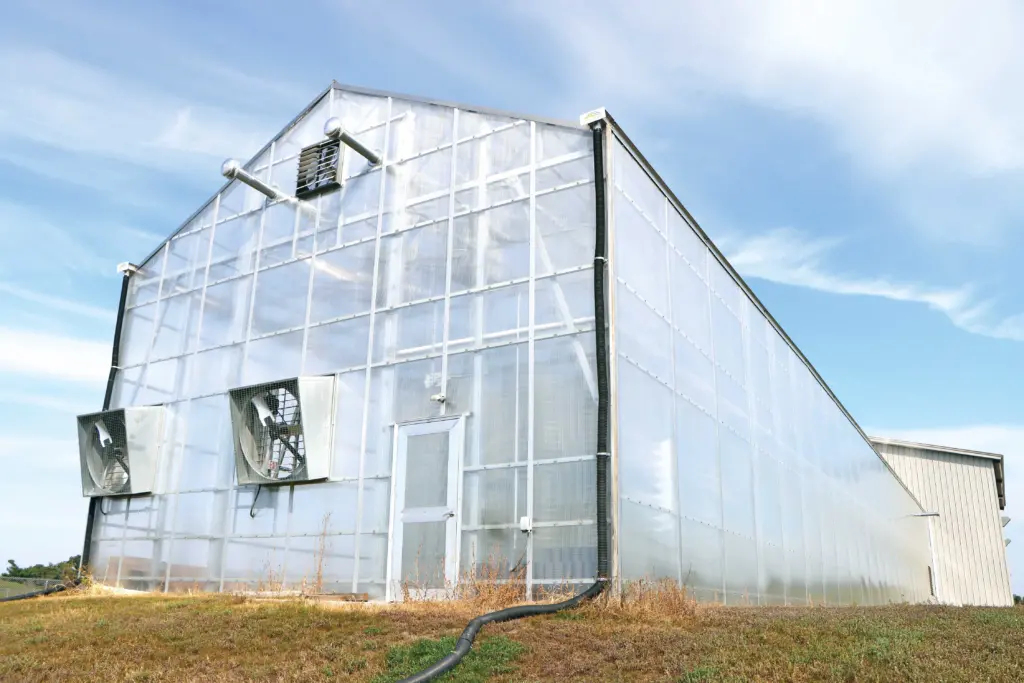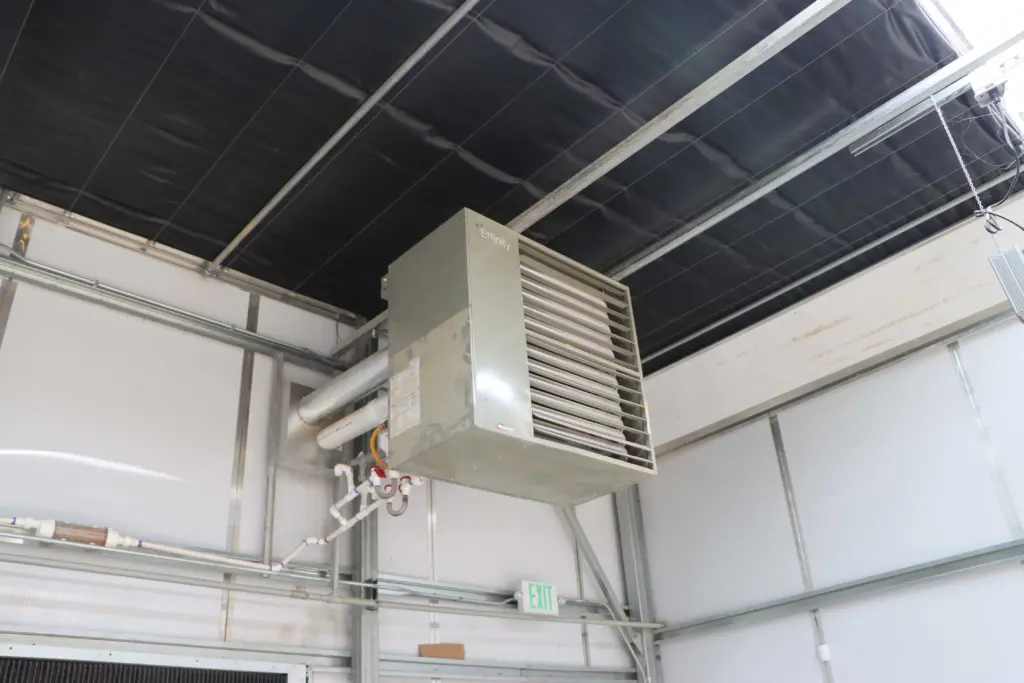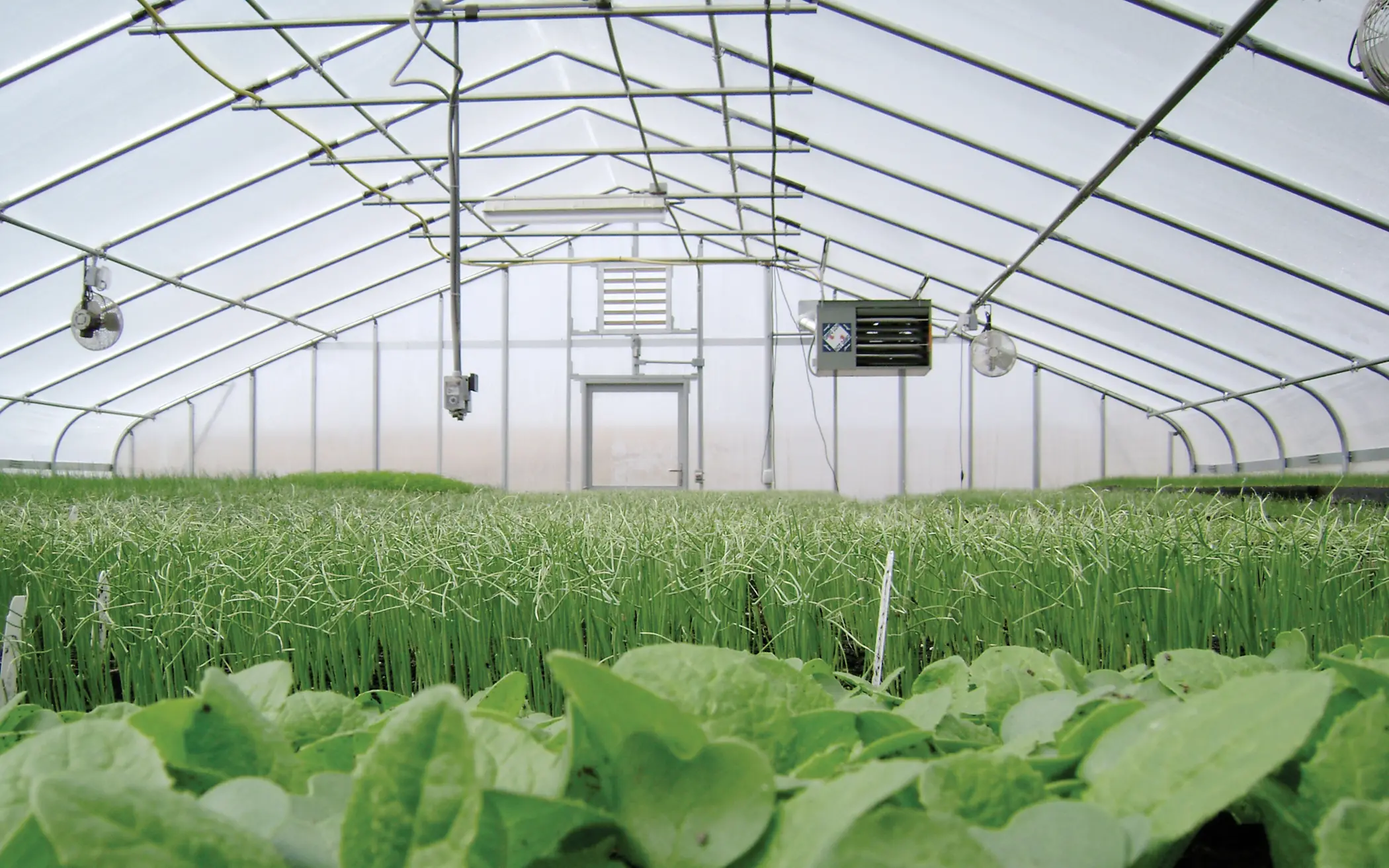Preparing for the Cold: How to Winterize a Greenhouse
With the winter months fast approaching, every northern grower knows that now is the time to prepare their greenhouse for the onslaught of winter weather and cold temperatures. However, understanding how to winterize a greenhouse the right way isn’t always common knowledge.
Winterization mainly consists of preventative measures to ensure a smooth transition into the colder months for an operation, so it is advised that growers begin this process in the fall. Starting winterization when temperatures have already gotten colder, or worse yet, not winterizing at all, can have detrimental effects on a grow.
Preparation is essential for a grow to flourish during the winter. A number of steps can be taken to establish a winter proof greenhouse, including cleaning the structure from top to bottom, testing systems’ functionality and ensuring the space is properly heated and insulated. These are all vital aspects of a facility that need to be properly tested and prepared before winter begins and temperatures start to drop. By doing this, growers will ensure their operation is able to combat the winter and their grow can continue to thrive.
Inspection
Growers should carefully inspect every aspect of their greenhouse to make sure it is in perfect operating shape. Even the slightest damage or abnormality can cause huge problems for a grower and their crops. Broken equipment, systems or cladding can cause substantial harm, or even halt plant growth altogether.
For example, a broken irrigation system could result in dehydrated plants and a broken heater could quickly cast crops into dangerously cold temperatures. This is why it is essential for growers to inspect every part of their operation; anything that’s overlooked may be damaging to a grow.
Growers should also check their cladding for any rips, tears or holes. If there are holes present, they will allow cold air and pests to get into the greenhouse, as well as make heating the structure nearly impossible. Heating with a poorly sealed greenhouse is inefficient and will quickly eat into winter profits.
It’s also important for growers to make sure their cladding is strong and can stand up to heavy snow and harsh winds, depending on the climate their operation is located in. Polyethylene film has a high tensile strength and comes in varying thicknesses, but may not stand up to strong winds or heavy snow. Double polyethylene film has added durability due to its two layers, and the middle can be inflated with air to provide superior insulation to the single-layer film.
Twin-wall polycarbonate is the most durable cladding option. It will stand up to inclement weather due to its rigidity and impact resistance. Twin-wall polycarbonate is even referred to as “bomb-proof,” so it can easily withstand just about anything thrown its way.

Next, growers should test all of their systems and ensure that they are functioning properly. This includes heating, irrigation, fertigation and any other systems that might need repairs over time. Operations will be better off making these repairs during the fall, so that their greenhouse is in perfect shape by the time winter rolls around and the weather gets colder.
Failed systems can quickly become detrimental in the winter. During the summer or fall, a greenhouse could arguably last a couple days with a failed system, but in the middle of winter, a grow could only last a couple of hours – if not less – before succumbing to the elements.
Sign Up NOw To Learn More
Sanitation
When learning how to winterize a greenhouse properly, it’s crucial for growers to understand the importance of cleaning and sanitation. By sanitizing and cleaning every part of their greenhouse and its equipment, they can greatly reduce the risk of pests and diseases. Growers should do this in the fall, so they have more than enough time to prepare for the winter season.
A good starting point is for growers to remove everything from their greenhouse, then clean and disinfect any benches, pots or equipment. Bleach and hydrogen peroxide are both great options for cleaning and disinfecting, but growers should always remember to dilute with water. A widely used cleaning solution for greenhouses is comprised of one-part bleach to nine parts water.
If a grower uses a hydroponics system, winterization provides the perfect opportunity to completely purge and clean their setup. This ensures that the system is free of harmful pests, diseases and pathogens that can damage a grow, and gets rid of any buildup from previous growing seasons.
Growers can begin by pulling all plants from their hydroponic system. Then, they will want to clean and sanitize the entire setup by clearing out reservoirs, NFT channels or Dutch buckets. Later, they can power wash and sanitize the greenhouse from floor to ceiling.
Lastly, operations can repopulate their greenhouse and begin to grow. It may be helpful for them to start seedlings in a propagation room during the purging process, so they are ready to go once the system is properly cleaned.
Growers should also clean and disinfect their greenhouse cladding. Using a non-abrasive towel or sponge is generally the best approach to avoid damage. After everything has been cleaned, growers can organize their greenhouse to optimize efficiency.
It is necessary to have a completely clean production space at any time of the year, but preparing for the winter gives growers the perfect opportunity to deep clean and organize their greenhouse to start off the new season on a clean slate. When temperatures eventually rise, this can also make their transition from winter gardening into springtime production a much smoother process.
Heating and Insulation
The two most important things to a grower in the winter are heating and insulation. Well before the start of winter, growers should test their heating system to make sure it is functioning properly. If growers wait too long to do so, or don’t test it at all, they might find themselves in an emergency situation where their plants no longer have a heat source.
It’s also a good idea for every operation to have a backup heater, in case of power outages or equipment failure. A great choice would be battery-powered heaters or gas heaters.
Growers should test their heating system and repair any part of it that is broken. It may also be a good idea to replace an old heating system with a new high-efficiency heater. One of the best high-efficiency heaters on the market is the Modine Effinity 93 Condensing Unit Heater.
This heater will provide a reliable source of heat, while helping to reduce energy costs. This heater is 93% efficient, so it is a cost-effective option monthly. It also protects against mold and maintains an even temperature with steady air circulation. While this heater may be an investment, it will pay for itself in no time at all with the amount of energy saved.

It’s also important for growers to test thermostats and environmental controls to make sure they are functioning properly. An accurate thermostat is a must-have for any operation, so growers should replace any inaccurate equipment immediately in favor of a newer, more precise option.
Additionally, growers will want to consider remote monitoring equipment, if they haven’t already implemented it. Many of today’s greenhouse controllers allow growers to monitor their greenhouse from a separate location. When growers are not able to be on site, this can provide them with peace of mind by ensuring their structure’s environmental conditions stay adequate.
A new high-efficiency heater will get a grower nowhere if a greenhouse lacks insulation. Again, a common culprit for heat loss is holes in greenhouse cladding, as these let cold air in and allow warm air to escape, which is the opposite of what growers need during the winter. Completely sealing a structure is a simple and easy fix that improves insulation immensely.

Growers should keep the R-value of their cladding in mind when making decisions regarding winterization. For example, 8 mm twin-wall polycarbonate cladding has an R-value of 1.72, which means it insulates well and prevents heat loss. This is due to the air pockets between the two walls providing superior insulation.
Inflated double polyethylene film is a cost-effective option that also uses air pockets for better insulation, and doubly poly generally has an R-value of around 1.5. On the other hand, single-layer polyethylene film has an R-value of .83. This is on the lower end, which will result in more heat loss and higher heating costs.
Growers should make sure they have the proper cladding for their particular climate, and to add insulation if they need more protection from freezing temperatures. This can include a variety of materials, like heat retention curtains, thermal insulation foil or even bubble wrap.
There are many steps growers can take to winterize their greenhouse, and each is important in a different way. It may be a bit time consuming and take a bit of effort, but being prepared for the winter and having a thriving greenhouse makes it worth the time. This is especially important for older greenhouses or greenhouses in colder climates, and these extra steps are sure to pay off with healthy, prosperous crops all winter long.
Want to protect your plants amidst low temperatures? Call or REQUEST A QUOTE today for more information on winterizing a greenhouse structure.
Related ARticles
Optimizing Heating In Your Winter Greenhouse: How To Make Sure Your Greenhouse Heater Doesn't Go TO Waste
There are a number of factors that influence performance in a winter greenhouse, and growers often have to consider the smallest details when they prepare their operation for cold weather.
How To Size A Greenhouse Heating System
Properly sizing a greenhouse heating system is crucial for increasing heating capacity and maintaining the perfect temperatures year-round.
Does Your Greenhouse Heating System Need AN Update?
Greenhouse growers often invest in equipment to improve accuracy and crop health, but have trouble deciding when it’s time for an upgrade.
Greenhouse INsulation: Here's What You Need To Know To Operate Your Greenhouse In Winter
To boost crop quality, while also limiting energy consumption, cold-climate growers have to bolster their greenhouse insulation.

